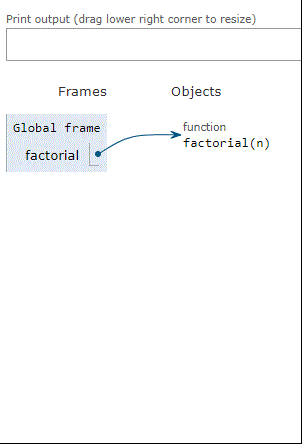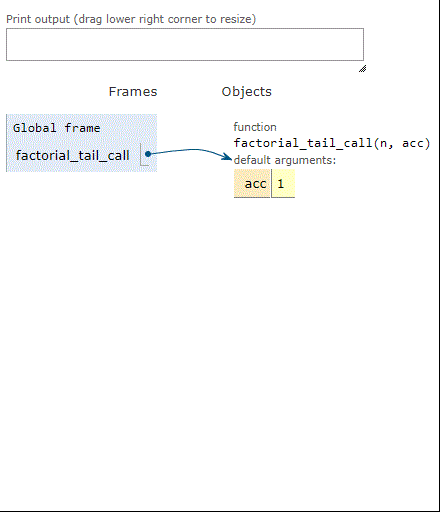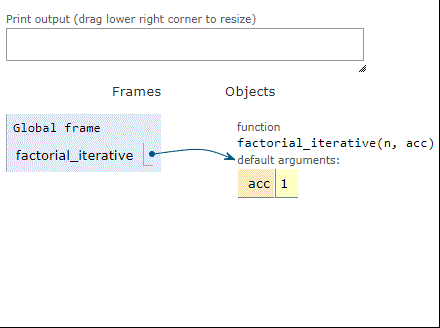1. 概述
递归和迭代是编程中重复执行代码的两种基本方式。虽然递归在某些场景下有其独特优势,但在实际开发中,迭代方式往往更受青睐,因为它在性能和内存占用方面更优。
本文将通过一个经典的阶乘函数示例,讲解如何将递归函数转换为迭代函数,重点使用尾递归优化方法,帮助你在面对复杂递归逻辑时也能游刃有余地进行重构。
2. 递归与迭代的区别
递归和迭代是实现重复逻辑的两种基本方式:
- 递归(Recursion):函数调用自身来执行重复逻辑。适用于结构清晰、可自然拆分的问题,如树遍历、阶乘计算等。
- 迭代(Iteration):通过
for、while等循环结构重复执行代码块,控制流更直观,内存效率更高。
✅ 建议:除非递归逻辑特别清晰且不会导致栈溢出,否则优先使用迭代。
3. 将递归函数转换为尾递归函数
尾递归是一种特殊的递归形式,其递归调用是函数的最后一步操作。这种结构可以被编译器优化为迭代,从而避免栈溢出。
3.1. 转换步骤
将普通递归转换为尾递归的核心思路是引入累加器(Accumulator):
- 找出非尾递归调用的位置
- 分析该调用与返回值之间的操作(如乘法)
- 引入一个累加器参数,保存中间结果
- 将非尾递归调用改为尾递归调用
- 重复上述步骤,直到所有递归调用都是尾调用
3.2. 将尾递归转换为迭代
一旦函数是尾递归的,就可以按如下步骤转换为迭代:
- 理解函数逻辑
- 确保所有递归调用都是尾调用
- 使用一个无限循环包裹函数体
- 将尾递归调用替换为参数更新 +
continue - 清理代码,去除冗余部分
4. 示例:阶乘函数
我们以阶乘函数为例,演示完整的转换过程。
4.1. 原始递归实现
public static int factorial(int n) {
if (n < 2) {
return 1;
} else {
return n * factorial(n - 1);
}
}
这是一个典型的非尾递归函数。问题在于:return n * factorial(n - 1); 中,递归调用不是最后一步,而是返回后再进行乘法运算。
4.2. 改造为尾递归
我们在函数中引入一个累加器参数 acc,保存中间结果:
public static int factorial(int n, int acc) {
if (n < 2) {
return acc;
} else {
return factorial(n - 1, n * acc);
}
}
初始调用为 factorial(n, 1)。这样,每次递归调用都变成了尾调用,递归栈不再增长。
4.3. 改写为迭代版本
接下来我们将其转换为迭代版本:
public static int factorialIterative(int n) {
int acc = 1;
while (n > 1) {
acc *= n;
n--;
}
return acc;
}
✅ 优点:只使用一个栈帧,避免了栈溢出问题,效率更高。
4.4. 栈帧对比图示
下面展示了三种实现方式在计算 3! 时的栈帧变化:
递归方式:

尾递归方式:

迭代方式:

⚠️ 结论:尾递归虽然逻辑上是递归,但在支持尾调用优化的语言中,可以做到与迭代相同的栈空间占用。Java 不支持尾调用优化,所以实际开发中建议直接使用迭代。
5. 复杂递归函数的转换策略
对于更复杂的递归逻辑,可以考虑以下方法:
- Trampoline(蹦床):手动控制递归调用顺序,避免栈溢出
- Continuation-Passing Style(CPS):将后续操作作为参数传递给递归函数,实现控制流的转换
✅ 注意:这些方法更适合函数式语言(如 Scala、Clojure),Java 中实现起来较为繁琐。
6. 总结
通过本文你学会了:
- 递归与迭代的基本区别
- 如何将普通递归转换为尾递归
- 如何将尾递归改写为迭代
- 阶乘函数的完整转换过程
- 为什么在 Java 中应避免深层递归
✅ 推荐实践:在实际项目中遇到递归逻辑时,优先尝试将其转换为迭代版本,尤其是处理大数据或深度不确定的场景。这不仅能提升性能,还能避免潜在的 StackOverflowError。